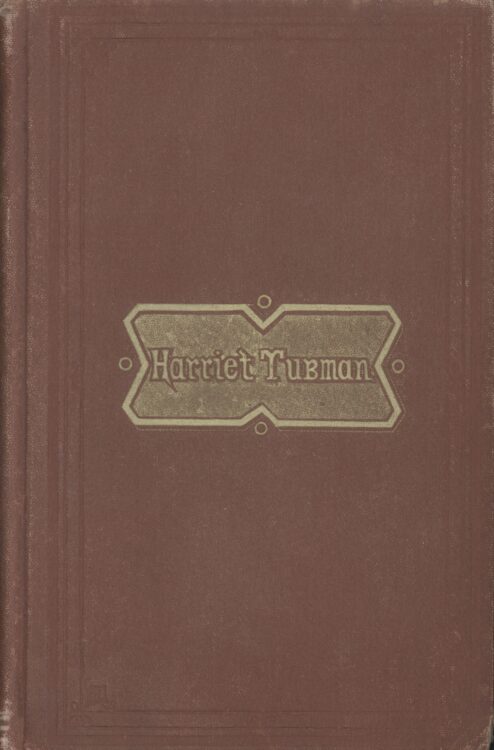Scenes in the Life of Harriet Tubman
Sarah H. Bradford
1869
For decades, Sarah Bradford’s text was the definitive source of information about Harriet Tubman’s life—the work cited by all subsequent publications. Comprised of Bradford’s retelling of stories related to her by Tubman, letters and testimonials from Tubman’s friends and acquaintances attesting to her achievements, and reprints of Tubman-focused newspaper articles, Scenes attempts to chronicle Tubman’s life while enslaved, her escape, her subsequent trips to retrieve others, and some of her exploits during the Civil War.
Unfortunately, Bradford—a white New Yorker on the outskirts of Tubman’s social circle—was not the best candidate for writing a biographical portrait of Tubman. She had only a passing familiarity with Tubman’s life prior to agreeing to write Scenes, and she assembled the work within an extremely short time frame, having plans to sail for Europe a few months after she began the project. As a result, the book itself has many flaws. It is structured rather haphazardly, with Bradford’s non-chronological narrative interspersed with letters and newspaper articles in no particular order. There are also several factual errors, many of which stem from Bradford’s tendency to dramatize events for maximum impact instead of faithfully recording Tubman’s personal history.
This text is responsible for codifying two key, yet inaccurate, pieces of information about Harriet Tubman. It states that there was a $40,000 reward for Tubman’s capture due to the threat she posed to enslavers with her skill as an Underground Railroad conductor. It also states that Tubman made nineteen trips to the South and helped free 300 people. Both of these were unsubstantiated claims. Tubman herself is noted by Bradford in this very work as only recalling a $12,000 reward, and several close associates of Tubman asserted that the number of people she led out of bondage was under 100. Despite their inaccuracy, Bradford’s claims became baked into the story of Harriet Tubman. Each new work that drew from Bradford’s text helped propagate these mythical elements. The $40,000 reward, for instance, makes its appearance in many of the other items featured in this exhibition.
A final consequence of the work’s impact is that although Tubman lived for forty-four more years after Scenes was originally published, the work’s status as the preeminent biographical resource meant that most people remained unaware of what she achieved in the second half of her life.


